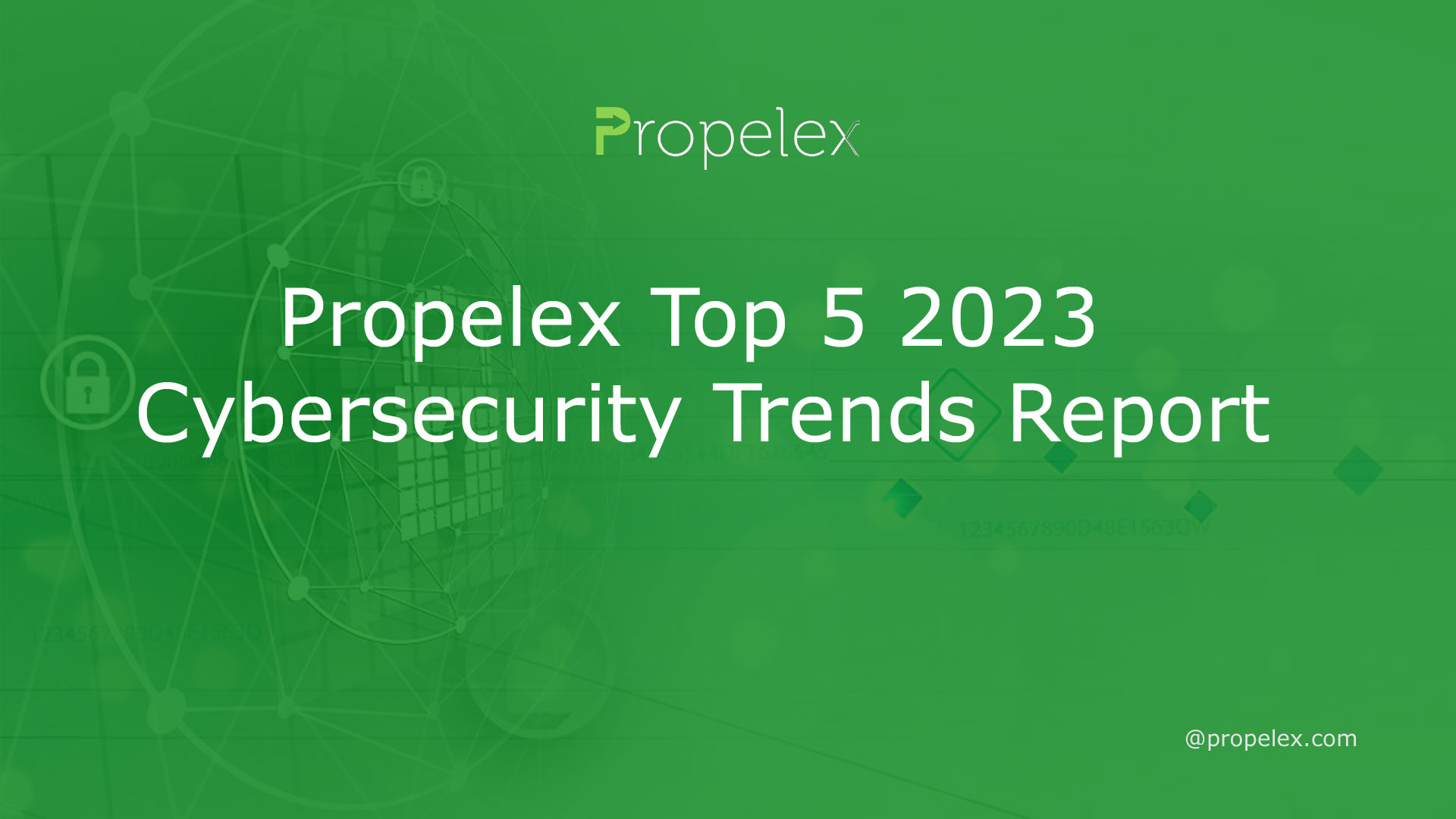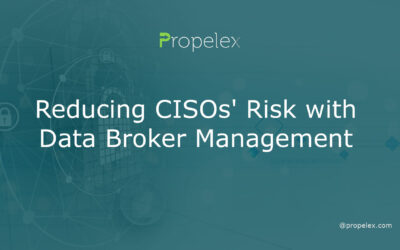As we look to the future of cybersecurity in 2023, it is crucial for organizations to stay ahead of the constantly evolving threat landscape. Propelex is proud to present our latest report, which delves into the top 5 trends shaping the cybersecurity industry and provides actionable insights for securing your organization in the years to come.
- Remote work and the rise of the hybrid workforce will continue to challenge cybersecurity strategies and require new approaches to secure data and networks.
- The increasing use of artificial intelligence and machine learning will lead to new threats, such as adversarial AI, as well as opportunities for improved security through automation and real-time threat detection.
- Cloud adoption will continue to accelerate, but organizations will need to address new security risks associated with multi-cloud and hybrid environments.
- The Internet of Things (IoT) will continue to expand, leading to new security risks and the need for security solutions that can handle the scale and diversity of IoT devices.
- Cyber-criminals will continue to exploit social engineering tactics, particularly through phishing and other forms of spear-phishing, to gain access to sensitive information.
1. Remote Work and the Hybrid Workforce:
The COVID-19 pandemic has resulted in an unprecedented shift to remote work, and this trend is likely to continue in 2023. As organizations embrace the hybrid workforce model, with employees working both remotely and on-premises, it is becoming increasingly important for cybersecurity strategies to adapt to this new reality. Remote workers may not have access to the same security controls as on-premises workers, and may be more vulnerable to attacks such as phishing and malware. To address these challenges, organizations should focus on security strategies such as Virtual Private Network (VPN) access, multi-factor authentication, and endpoint security.
2. Artificial Intelligence and Machine Learning:
The increasing use of artificial intelligence and machine learning in cybersecurity is creating both new threats and new opportunities. Adversarial AI, where hackers use machine learning techniques to evade detection, will become a growing concern. On the other hand, AI and machine learning can be use to improve security by automating threat detection, identifying patterns in network traffic, and detecting anomalies. To capitalize on these opportunities and mitigate the new threats, organizations should invest in security tools that use AI and machine learning, and provide the necessary resources for training and maintenance.
3. Cloud Adoption:
The adoption of cloud services will continue to accelerate in 2023, as organizations seek to take advantage of the scalability and flexibility of the cloud. However, with the adoption of multi-cloud and hybrid environments, new security risks are emerging. To secure these environments, organizations should focus on visibility and control across all their cloud services, including Infrastructure-as-a-Service (IaaS), Platform-as-a-Service (PaaS) and Software-as-a-Service (SaaS). They should also implement security best practices such as encryption, access control, and incident response.
4. IoT Security:
The Internet of Things (IoT) will continue to grow and become more integrated into everyday life. This expansion of connected devices creates new security risks, as many IoT devices have poor security and can easily compromised. To address these risks, organizations should implement security solutions that can handle the scale and diversity of IoT devices. This includes device management, patching, and incident response capabilities. They should also encourage IoT vendors to improve the security of their devices and to adopt industry standards and best practices.
5. Social Engineering:
Phishing and other forms of spear-phishing will continue to be a significant threat in 2023. Cybercriminals will continue to exploit social engineering tactics to gain access to sensitive information. To mitigate these risks, organizations should educate their employees on how to spot and avoid phishing attempts. They should also implement security controls such as multi-factor authentication and email security solutions that can detect and block phishing attempts.
In summary, as the technology and business environment continue to evolve, organizations need to stay vigilant and continue to adapt their cybersecurity strategies to address the latest threats. By focusing on the five key trends outlined above, organizations can better protect their data and networks and stay ahead of the curve in 2023.









